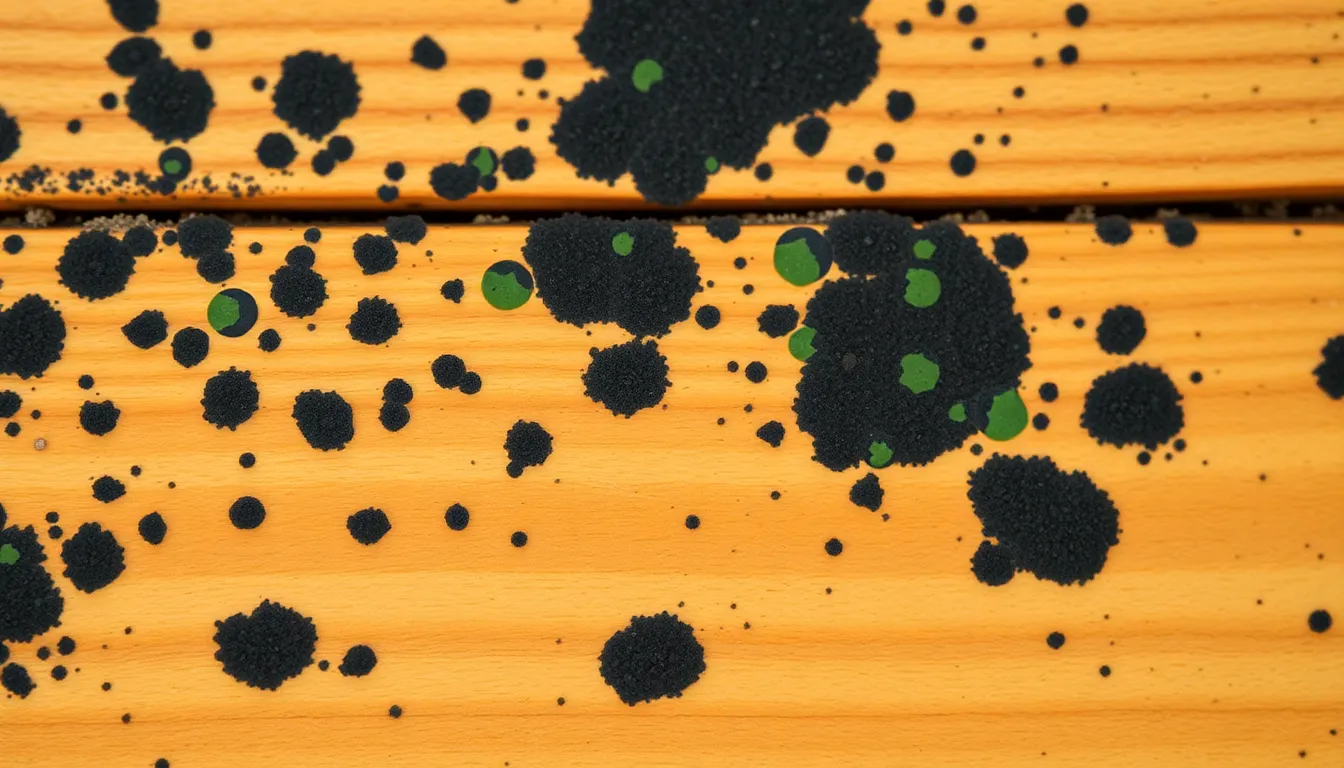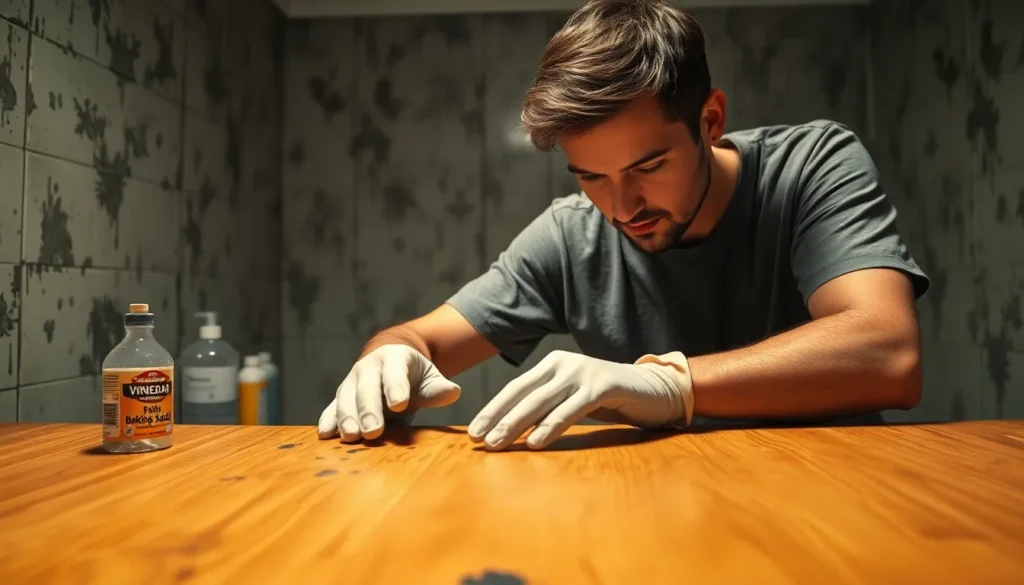Table of Contents
ToggleBlack mold on wood isn’t just a nuisance; it’s a sneaky little villain that can wreak havoc on homes and health. If you’ve ever spotted those unsightly black spots creeping up your favorite wooden furniture, you know it’s time to take action. But don’t panic—killing black mold doesn’t require a degree in chemistry or a PhD in mycology. With the right tools and a dash of determination, anyone can send this unwelcome guest packing.
Understanding Black Mold
Black mold poses serious risks to wooden structures and overall health. Recognizing its characteristics and understanding its hazards proves crucial in maintaining a safe environment.
What Is Black Mold?
Black mold, scientifically known as Stachybotrys chartarum, thrives in damp, humid conditions. This fungus appears as dark green or black spots, often lurking on wood surfaces in areas with water damage. Moisture is essential for growth, making bathrooms, basements, and kitchens common breeding grounds. Awareness of its presence is vital for effective remediation.
Risks and Dangers of Black Mold on Wood
Black mold can cause structural damage to wooden furniture and surfaces over time. Rotting wood can weaken foundations and support beams. Exposure to black mold poses health risks, including respiratory issues, allergies, and headaches. Individuals with weakened immune systems or pre-existing conditions face heightened vulnerability. Prompt action mitigates these risks effectively, ensuring a safer living space.
Identifying Black Mold on Wood

Identifying black mold on wood involves recognizing specific signs and assessing various areas in the home. It’s crucial to act quickly upon noticing anything unusual.
Signs of Black Mold Infestation
Black mold manifests through visible black or green spots on wood surfaces. Foul odors often accompany these spots, indicating mold growth. Family members may experience respiratory issues or allergic reactions, including sneezing and coughing. If there’s persistent moisture or humidity, that provides an ideal environment for black mold. Stains or discoloration on wooden materials signal potential infestation as well.
Areas to Check for Mold
Bathrooms often harbor black mold due to moisture from showers and sinks. Check basements for wood that’s exposed to dampness and poor ventilation. Kitchens are prime spots because of water leaks from appliances or plumbing. Inspect door frames and window sills; condensation can accumulate here. Attics also require attention, especially if they contain insulation that retains moisture. Identifying mold in these areas ensures timely intervention and remediation.
Effective Methods to Kill Black Mold on Wood
Removing black mold from wood is essential for both health and structural integrity. Several effective methods exist, including natural remedies and chemical solutions.
Natural Remedies
Vinegar serves as a powerful mold killer. Its acidity disrupts the mold’s structure, preventing further growth. To use it, pour undiluted vinegar into a spray bottle, apply it directly on the affected surface, and let it sit for at least an hour. Baking soda offers another effective option. Mix one tablespoon of baking soda with water, apply the paste to the mold, scrub gently, and then rinse with water. Tea tree oil, though more expensive, also proves effective against mold. Combine a teaspoon of tea tree oil with a cup of water in a spray bottle and treat the mold directly.
Chemical Solutions
Hydrogen peroxide functions as a strong antifungal agent. A 3% concentration is typically sufficient for killing mold. Spray the affected wood, allow it to sit for at least 10 minutes, and then scrub the area. Another popular chemical option is bleach, which can effectively kill mold on non-porous surfaces but may not completely penetrate porous wood. For best results, mix one cup of bleach with a gallon of water, apply it to the moldy area, and rinse thoroughly after a few minutes. Both solutions should be utilized with proper ventilation to ensure safety during application.
Preventing Future Mold Growth
Preventing future mold growth is critical for maintaining a healthy home environment. Simple strategies can mitigate the conditions that allow black mold to thrive.
Importance of Proper Ventilation
Proper ventilation controls moisture levels in indoor spaces. Air circulation regulates humidity, making rooms less hospitable to mold. For instance, installing exhaust fans in kitchens and bathrooms aids in removing excess moisture. Ensuring that vents are unobstructed and functional promotes airflow. Windows can be opened during dry days to further decrease humidity. Addressing areas prone to dampness can significantly reduce the risk of black mold growth.
Regular Maintenance Tips
Regular maintenance helps identify and address mold-friendly conditions early. Check for leaks in plumbing and roofs, as water intrusion is a leading cause of mold proliferation. Inspect wooden surfaces for signs of discoloration, which may indicate moisture issues. Cleaning gutters and downspouts ensures proper drainage, minimizing water accumulation. Using dehumidifiers in damp areas lowers humidity levels effectively. Lastly, routinely cleaning to remove dust and organic debris prevents spores from settling and germinating.
Addressing black mold on wood is essential for maintaining a healthy living environment. With the right approach and tools it’s possible to effectively eliminate mold and prevent its return. Regular maintenance and proper ventilation play a crucial role in keeping humidity levels in check. By staying vigilant and applying the methods outlined in the article homeowners can protect their property and health from the dangers posed by black mold. Taking proactive steps ensures a safer and more comfortable home for everyone.










